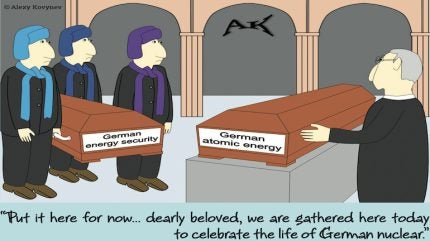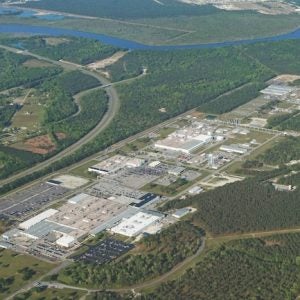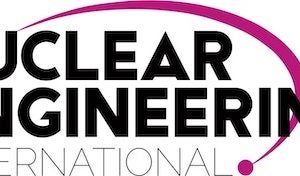
Nuclear energy is fundamentally winter technology. It really comes into its own as the mercury plummets and the weather turns icy. When storms hit and other plants suffer from unplanned outages, nuclear plants typically power on. The energy density of the fuel saves the plant from unexpected supply disruptions while the high standards and safety culture grants it resilience to bad weather. During the coldest periods, many plants will even provide more electricity than their rated maximum due to the magic of thermodynamics.
Beyond copious amounts of reliable electricity, some nuclear plants have also been adapted to serve nearby communities with precious heat too. Such nuclear district heating systems will surely contribute greatly to goodwill and public acceptance wherever they save folk from expensive heating bills. With a long and established history in Europe already, Chinese nuclear developers also seem to have recently embraced cogeneration with a will.
There’s generally not a lot of good things to say about the comparatively low thermal efficiency of nuclear plants, but the potential for sizeable district heating systems is certainly one saving grace. As the world starts to grapple seriously with the question of how to actually decarbonise heating requirements it seems very likely that we will see more of this – perhaps even as a standard feature in the future. We can put some of that otherwise so-called ‘waste heat’ to a good purpose.
Or, if your preferred solution to the heat decarbonisation challenge is heat pumps, well here too nuclear plants have you covered. They will cheerfully provide the steady energy output required to power these thermal exchange devices and keep people warm in their houses. While any heating solution which puts additional strain on the grid during the winter peak is perhaps not ideal, heat pumps are certainly better than old-fashioned electric radiators.
Looked at another way, if Santa’s mythical workshop had need of a power-source, you could bet your last candy cane and mince pie that it would be a nuclear plant. One can only speculate about the engine in the sleigh, but chances are good that’s nuclear also. Super-sonic nuclear rockets if one had to guess. Just a thought, but all that red may serve as a warning as well as a clear signal of unbounded festive good cheer.
Which is a joke, obviously, and yet contains a grain of truth as the nations which are home to the factories that make most of the world’s consumer products are increasingly hungry for nuclear energy. Perhaps in the future they will even be shipped to market in nuclear-powered cargo vessels.
Going even one better than St Nick, nuclear plants really do provide a lot during the winter season, even to the ‘naughty children’ traditionally excluded from the festive good cheer. Recent news highlighted how during a December dunkelflaute – a German word that translates roughly as a ‘dark doldrum’ – power exports from France to Germany surged as the day ahead market power price went to about EUR1000/MWh.
Given how commonplace these serious wind lulls seem to be, and how much natural gas Germany continues to import from Russia, one has to wonder if the German public still truly continues to back the nuclear phase out.
Blowing out a candle and making a wish, we can only hope that German public and political leaders will finally change their tune and a resurgent German nuclear industry returns to start asserting itself on the global stage. It is a development that is absolutely necessary for the country to take the role of climate leader it aspires towards. But, with the growing inter-connectedness of transmission grids and increased links between national power markets, even a country that is nominally nuclear-free can continue to benefit from its neighbour’s nuclear resources. Increasingly, however, they should expect to pay top dollar for it. This is the price of deliberately sacrificing national energy security and resilience on the altar of radiophobia.
To be fair, energy markets and interconnected grids also allows for the trade of any electricity – regardless of source – at a similar premium. Fossil-fuelled peaking plants are the true unsung champions of the grid and especially as temperatures plunge and the annual demand hits its maximum. This leads to the still unanswered question of how exactly are we ever going to replace dirty peaking plant with low-carbon generation?
Meeting winter electricity demand requirements was a challenge even before many countries apparently moved to ‘transition’ to a class of energy technologies which are well-known to famously go AWOL with the bad weather. Winter storms in the last decade in Texas and Japan have highlighted the extreme pressure the energy system can come under, and the consequences that occur when they fail. The generating profile is not the only factor here but is a big one.
Some might venture then that perhaps it is fortunate that the general effect of anthropogenic climate change is planetary warming instead of cooling? Maybe this warmer world justifies the decision to try and base energy systems on intrinsically intermittent generating technologies? The irony is not lost that if nuclear plants are the perfect winter technology then global warming is reducing the length of winter and making them warmer. Does this potentially undermine the case for nuclear energy?
On all counts the answer is a decisive no. Climate change means that while maybe winters won’t be as cold as they used to be, they will certainly still be plenty cold enough to tax the energy system. And, (depending on which climate expert you listen to), future deep-freeze ‘bomb-cyclone’ events could even become more frequent and/or severe in the future. The energy system absolutely must be designed to reliably serve at those times when people need it the most. Nuclear energy’s role as the flexible low-carbon workhorse of the electricity network is thus essentially unchallenged. And, the logical conclusion of that fact is that the choice to become overly dependent on weather-based renewables in a climate-volatile future world remains as hopelessly naïve as ever.
A look around the world also shows that plenty of hot countries are either developing nuclear energy now or are well on the way towards it. Nuclear may be the winter technology par excellence, but it is also more than flexible enough to meet the power needs of the likes of warmer nations including the United Arab Emirates, Egypt and India. What’s more, nuclear power provides a perfect alternative to hydroelectric generation wherever water resources are scarce and forms the natural go-to baseload option whenever the finite hydro resource is tapped out. In place of district heating, desalination becomes the non-electric application that is most likely to make sense in warmer, drier countries. This is another energy purpose which has been served by nuclear plants in the past and is simply waiting for its opportunity in the future.
It’s clear that whatever the future planetary climate ultimately looks like nuclear plants will be well suited for it. Taking the temperature of the global energy debate, it is pleasing to see that politicians are increasingly convinced of this also. The future of nuclear energy looks unquestionably bright whenever northern hemisphere winter energy realities kick in.
Sticking with the festive theme, it may be a long-held tradition as the nights draw in that naughty children get coal. The good kids get uranium.






